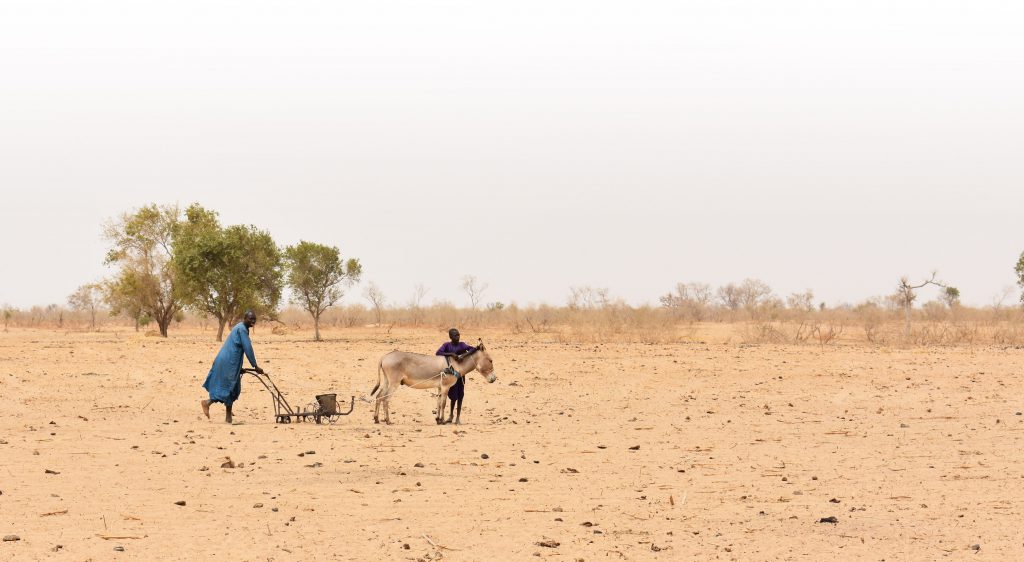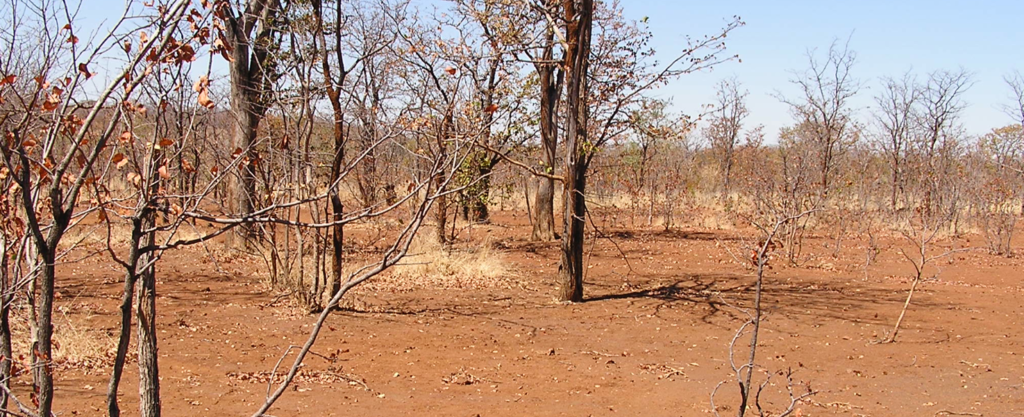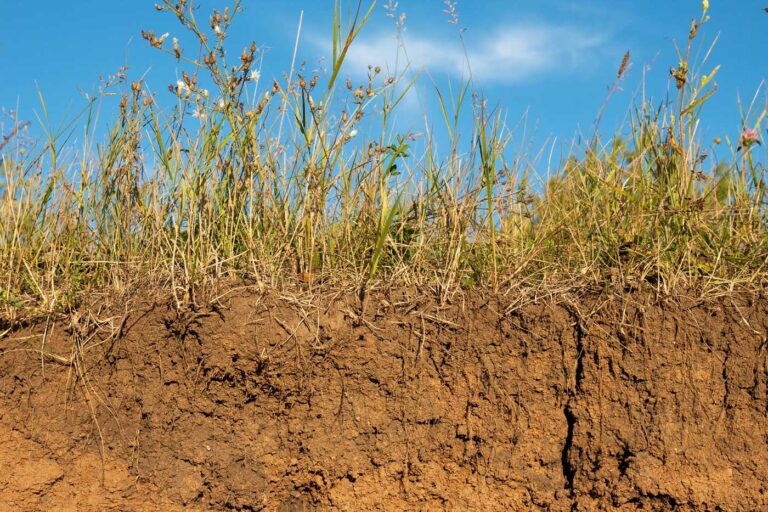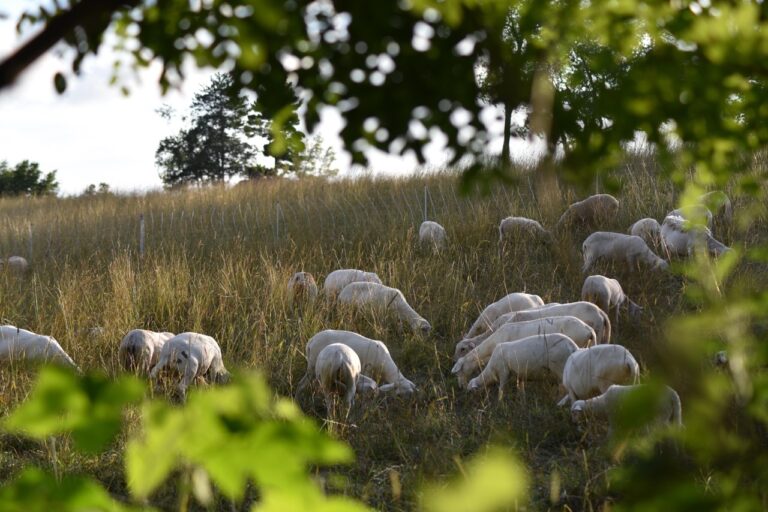Climate change has accelerated dramatically in the last two centuries due to our heavy use of fossil fuels and the resulting emissions of CO2 and other heat-retaining gases into the atmosphere.
It has also accelerated due to the development of industrial (oil-based) agriculture and the dramatic expansion of the world’s deserts.
In short, desertification and climate change are inseparable. Together they have led to the demise of many civilizations in various areas of the world, and they now threaten civilization globally.
What is Desertification?

Desertification is the persistent degradation of dryland ecosystems by variations in climate and human activities. These drylands are home to over a third of the entire human population and they occupy nearly half of Earth’s land area.
Desertification affects the livelihoods of millions of people who rely on the benefits that dryland ecosystems can provide.
Some 10 to 20% of drylands are already degraded, and ongoing desertification threatens the world’s poorest populations and the prospects of poverty reduction.
Therefore, desertification is one of the greatest environmental challenges today and a major barrier to meeting basic human needs in drylands.
What Causes Desertification?

Man-made desertification begins when the available rainfall becomes less effective. Most of the rain (or snowmelt) runs off the soil surface, or is absorbed by the soil but then evaporates out of the soil surface – resulting in both floods and droughts.
In the vast grasslands of the world, rainfall becoming less effective begins with increased soil exposure between grass plants.
After sixty years of investigation on six continents, and a great amount of literature research, Allan Savory found only two things lead to millions of hectares of grassland with a high percentage of bare soil between plants:
- Too few animals providing inadequate periodic disturbance while overgrazing plants
- Fire
When there are too few large grazing animals, there is not enough physical disturbance to ensure rapid biological decay of annually dying leaves and plants, nor adequate trampling of that plant material to provide soil cover.
When exposed to sunlight, this dying plant material breaks down by gradual chemical oxidation rather than rapid biological decay, thus breaking the decay part of the annual cycle of dying leaves and stems.
So, what can we do to fight against these trends?
We Need to Increase Organic Matter & Carbon in Soils

Covering bare soil, and keeping it covered, with living or dead plant material (litter) is key to restoring soil health and the biggest hope for immediate salvation from desertification because it is relatively easy to provide soil cover, which in turn leads to an increase inorganic matter.
Any increase in soil organic matter also greatly increases the rate of water infiltration and retention in soil. The amount of water that can be held in the ground through healthy, covered soils dwarfs the storage in the World’s largest dams.
Relatively small increases in soil organic matter amount to billions of tons of carbon stored safely and permanently over billions of acres of land.
Conversely, relatively small decreases in soil organic matter result in vast amounts of carbon released to the atmosphere. This in turn helps minimize the frequency and severity of most of today’s floods and droughts that are worsened by desertification.
Restoring Desertified Croplands: A New Agriculture is Required
Most cropland soils, whether rain-fed or irrigated, have lost much of their organic matter and soil life, resulting in more rapid soil erosion than at any time in history — about 21 gigatons per year on croplands alone. Not only does that impact our ability to grow food, it impacts the soil’s ability to store carbon. Independent scientists involved in sustainable agriculture estimate that the entire legacy carbon load could be absorbed in the world’s croplands, were they properly managed.
Recent estimates put the amount of eroding soil annually going down the world’s rivers at about 24 billions tons or 4 tons per human alive today.
We need a new form of agriculture that can provide easily harvestable and transportable excesses to feed urban populations.
This new agriculture will need to be truly holistic in that it mimics nature and restores soil health — keeping soils permanently covered with cropping practices more akin to nature’s polyculture complexity than today’s single-crop fields that leave the soil bare between plants and rows and, in many cases, over the entire non-growing season.
Such a new agriculture will remove and store carbon from the atmosphere risk-free, while also increasing water retention.
Restoring Desertified Rangelands: Using Livestock to Reverse the Trend
According to the United Nations, one-third of the earth’s land surface (10 billion acres / 4 billion hectares) is threatened by desertification, the bulk of which is rangelands.
Using a simple grazing planning procedure developed more than 40 years ago, and field-tested on rangelands the world over, livestock can be used to restore rangelands to health and productivity.
Desertification can be reversed on most rangelands by increasing livestock numbers while planning their concentration and movement carefully.
At Savory Institute, we call this Holistic Planned Grazing.
It uses a planning procedure for grazing herds that mimics the movement and grazing patterns of the wild herds of old, minimizing overgrazing of plants while harnessing the beneficial soil-preparation effects of trampling hooves that knockdown old vegetation and chip bare soil surfaces, and dung and urine that cover them with fertilizer.
This process is designed to naturally increase vegetation on rangelands, fill in bare spaces, and keep the soil covered year-round — once again helping the soil to store both carbon and water.
Holistic Planned Grazing, combined with the rest of what has become known as Holistic Management, not only enables us to massively sequester carbon from the atmosphere, it also helps ensure food and water security.
What’s more, it produces greater revenue for land managers than the cost of implementation, while generating a truly sustainable form of wealth in healthier, more productive, land.
This post has been adapted from Allan Savory’s essay “A Global Strategy for Addressing Climate Change.”
More Resources
Holistic Management: A New Framework for Decision Making »
Holistic Management Courses Online »





